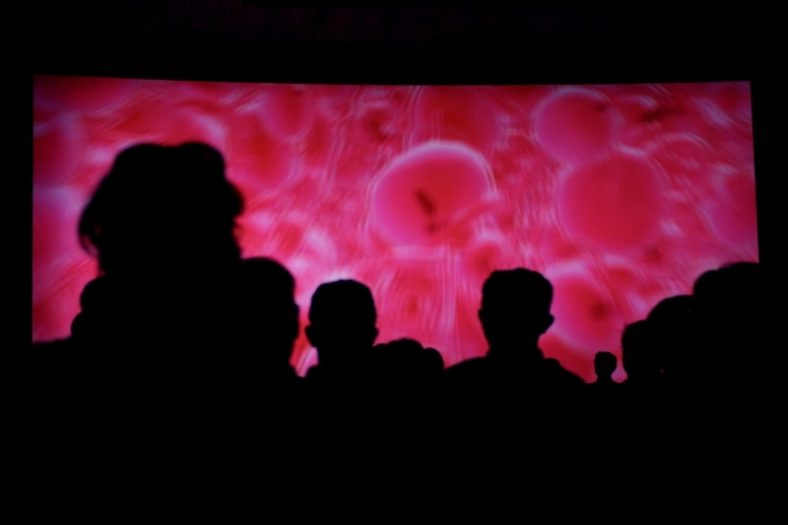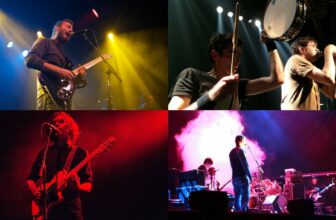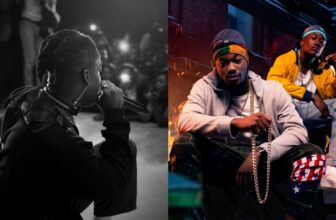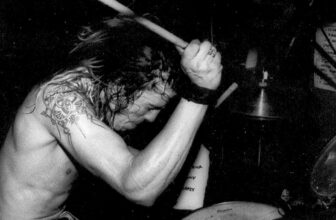12 Different Types of Trance Music

Trance is a genre of electronic dance music characterized by a rapid four-on-the-floor beat at 130-160 BPM, abundant synth arpeggios (usually in a minor key), and a build-up/release song structure. It’s inspired by other genres of EDM (especially techno), psychedelic imagery, and new-age themes.
Born in the sweatiest underground parties of central Europe in the early ’90s, trance music was named as such due to its hypnotic, trance-inducing effect. It rapidly gave way to a worldwide subculture of nature-friendly rave-goers and inspired numerous subgenres.
Below, you can find 12 of the most popular and distinctive types of Trance music.
Contents
1. Goa Trance
There are two types of Trance music subgenres: the ones that come from the European dancefloor and the ones that come from Goa. Goa Trance is naturally the first of the latter. Initially popularized in the Indian region of Goa by the iconic local hippie Goa Gil (hence the name), the subgenre quickly turned global.
What sets Goa Trance apart is its use of world-music influences and its spiritualism. It represents the hippie side of Trance music, which contrasts with the urbanism of early European Trance records. Music-wise, it’s still dancy, but it’s a lot looser and abstract than traditional Trance music.
2. Acid Trance
Acid Trance is an intense subgenre of Trance music that’s heavily influenced by Acid House and usually relies on arpeggiated Roland TB-303 bass lines and noisy open hi-hat patterns.
Like most intense things, Acid Trance was destined to be short-lived. Hundreds of Acid Trance releases came out in the early ’90s, but it is becoming increasingly rare with time. Mainly popular in Belgium, Netherlands, and Germany, Acid Trance still managed to influence the work of the renowned Japanese producer Dream Dolphin.
3. Psytrance
What happens when you combine the spiritualism of Goa Trance with the hard-hitting, rave-ready pace of Acid Trance? The answer is Psytrance!
Psytrance is one of the fastest subgenres on the list, with tracks hitting 150 BPM constantly. It’s characterized by combining arpeggiated bass lines with the world music influences introduced into the Trance scene by Goa Trance.
A good way to understand Psytrance is to think of it as a more gentrified version of Goa Trance. While the latter focuses on hippie spiritual values, Psytrance is more oriented to hippie psychedelia per se: namely, illegal substances such as marijuana and especially LSD.
It’s no coincidence that the two greatest producers in this style are called Hallucinogen and Infected Mushroom. The British act Shpongle is also heavily influenced by Psytrance.
4. Hard Trance
Rave music and Trance music have always been close but distinguishable siblings. Initially popularized in the early ’90s, Hard Trance was the substyle that mashed them together.
Hard Trance was perfectly suited to the dancefloor and was mainly popular in Belgium during the early ‘90s. While it never quite made its way out of the Old Continent, the subgenre continues to be influential today.
There’s a new wave of Hard Trance-inspired producers making very interesting music in the ‘2020s, including the German HDMIRROR and the Chilean Anthony1.
5. NRG
NRG is a subgenre of Trance music heavily inspired by the offbeat bass patterns of UK Hard House. While it still relies on arpeggiated basslines and melodies, NRG adds a syncopated twist to the traditional four-on-the-floor Trance beat.
When the early ’90s Trance music started to sound a little bit too stale, some creative producers and DJs came up with a refreshing new version of the genre. NRG was mainly hot during the late ’90s and early 2000s.
NRG is also closely inspired by Hard Trance. In a way, NRG is to Hard Trance what Minimal Techno is to Detroit Techno: a less melodic, more stripped-down style.
6. Progressive Trance
Progressive Trance is one of the least cohesive substyles on the list because it includes both dancefloor-ready tracks and quasi-ambient songs. The best-known Progressive Trance tunes were popularized in the early ‘2000s by DJs such as Paul van Dyk and Paul Oakenfold – who even released a song called “This Is Trance.”
However, the producers that best exemplify the unique characteristics of Progressive Trance are the likes of BT and Vibrasphere. Their style of Progressive Trance is characterized by the extensive use of pads, slow tempo, and ambient textures.
Progressive Trance was influenced by Dub, Downtempo, and Ambient Techno: in a nutshell, it’s Trance music to listen to while at home.
7. Dream Trance
Dream Trance is a nearly-forgotten subgenre of Trance music that was briefly popular in the mid-’90s. Ignoring it, however, would be unforgivable. After all, Dream Trance planted the seeds for the commodification of Trance music that started taking place in the late ’90s.
Before Trance went full pop, Dream Trance was tipping its toes into the mainstream. It combined Progressive Trance and Progressive House influences with a more commercial, vocal-oriented approach.
Even though it was popular for a very brief period, Dream Trance gave way to some incredible works of art. Robert Miles’ album “Dreamland” is amazing from beginning to end and Oceanlab’s “Sirens of the Sea” is pretty chill.
8. Euro-Trance
It didn’t take long before mainstream pop producers in Europe realized that Trance music could be easily turned into a radio-friendly product. Euro-Trance is the consumer-ready subgenre of Trance music any real Trance fan will advise you to skip.
Trance music is essentially about the underground dance culture, entering a state of musical hypnosis, and sharing spiritual values (and experiences) with a close-knit community. None of that is represented by Euro-Trance.
Inspired by Eurodance, Euro-Trance was briefly popular in central Europe during the early 2000s and never spread too far. This oddity is one of the subgenre’s best-known tunes.
9. Tech Trance
Even though Euro-Trance didn’t quite manage to take Trance into the mainstream, Tech Trance did so with remarkable success. This substyle helped to turn Tiësto into one of the world’s best-paid DJs with hit songs like “Just Be.”
Tech Trance combined the “beachy” vibe of Dream Trance and the commercial posture of Euro-Trance with traditional pop structures and was successful in finally bringing Trance music to the FM radio.
Whenever you listen to a good-quality pop track with a Trance beat, you’re most likely listening to Tech Trance. However, some producers did try to take the subgenre further. Prins Thomas is one of the best examples.
10. Big Room Trance
Tech Trance helped to bring Trance music into the radio, so now it was time to bring Trance music into the world’s top festivals. By combining the traditional pop structures in Tech Trance with the stadium-ready beat of Electro House, Big Room Trance was the sound that did so.
Popularized in the late ‘2000s, Big Room Trance is the Tomorrowland-type Trance that inspired big DJs such as Armin van Buuren and MaRLo and still drives crowds mad. The Dutch act W&W is often credited for being among the pioneers of the genre.
11. Suomisaundi
Now the plot thickens: Trance music got so far that even some of its subgenres started inspiring sub-subgenres. Suomisaundi is surely among the craziest styles of electronic dance music around and it takes the wackiness of Psytrance one or two steps further.
Initially popularized in Finland (hence the name), Suomisaundi quickly turned global. By global, I mean that it inspired a small niche of producers spread all over the planet. Describing this hallucination-inducing style of music isn’t easy, but I’ll say it sounds like a version of Psytrance that’s making fun of itself.
With a focus on experimentation, comedy, and some acid influences, Suomisaundi was popularized by artists such as Pelinpala, Luomuhappo, and Tekniset.
12. Hi-Tech Trance
Hi-Tech Trance is yet another sub-substyle of Trance, as it falls under the umbrella of Psytrance. Popularized in the mid-‘2000s, it brought a futuristic approach to the psychedelic themes of Psytrance by incorporating elements of glitch music, robotic synth sounds, and absurdly fast beats (sometimes up to 230 BPM).
If Psytrance is about nature, psychedelic mushrooms, and LSD, Hi-Tech Trance is about transhumanism, computers, and DMT. Some Hi-Tech Trance tracks, such as Vega Quadron’s “Day Sleeper,” are extremely complex and well-produced. This substyle also inspired Psykovsky, one of the most creative (and weird) Trance producers out there.
Summary
There’s no doubt that Trance is one of the most fertile genres of electronic dance music. A global phenomenon, it inspired artists and fans everywhere and gave way to many counterculture movements, close-knit communities, and crazy music festivals.
Trance music started in the dancefloors of central Europe, reached Goa Gil in faraway India, gave rise to the Psytrance phenomenon, hit mainstream radio, and headlined major music festivals. Yes, Trance music did all of that in roughly three decades, so who’s to say what’s coming next?





